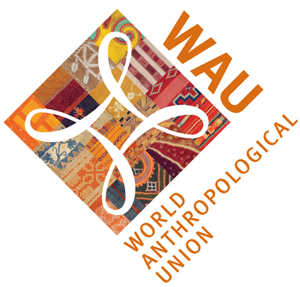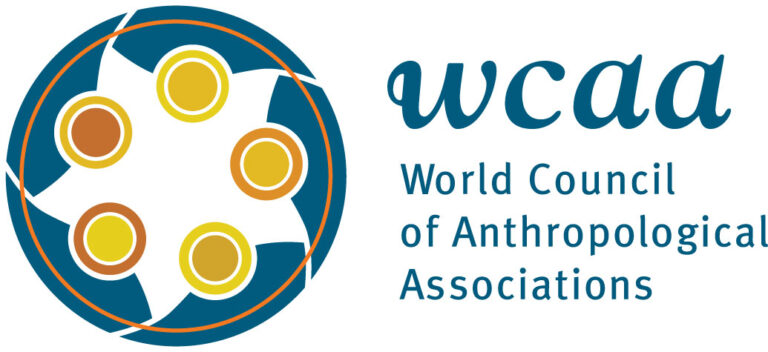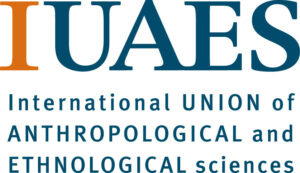中華とイスラームのあいだ
奈良雅史
北海道大学
礼拝などができないムスリムがイスラームの宣教活動を担う。こうした現象をいかに理解することができるのか。昨年出版した私の民族誌(奈良雅史2016『現代中国の〈イスラーム運動〉――生きにくさを生きる回族の民族誌』風響社)はフィールドで出会ったこの問いへの私なりの答えである。
私は博士論文を執筆するために回族と呼ばれるムスリム・マイノリティを対象に中国雲南省昆明市において2年間のフィールドワークを行った。回族は主に唐代から元代にかけて中国に移住した外来ムスリムとイスラームに改宗した漢人との通婚の繰り返しにより形成された民族集団とされる人びとである。彼らは中国全土に分散して暮らし、漢語を母語とする。
中国では1978年の改革・開放政策の導入以降、宗教政策の緩和により、宗教が急激に復興してきたとされる。回族社会もその例外ではなく、宣教活動などの宗教活動が活発化した。また、厳格なイスラーム言説もその影響力を拡大し、敬虔さが志向される傾向が強まった。しかし、上述のようにイスラームに関わる活動を担っているのは、必ずしも敬虔なムスリムだけではない。それには改革・開放以降の回族社会の変化が関係している。
回族は上述のように全国に分散して暮らしているが、各地でモスクを中心としたコミュニティを形成してきた。しかし、伝統的な回族コミュニティの居住形態が1980年代以降の都市開発によって維持できなくなった。その結果、漢族との関係が深まるなか、宗教意識が弱体化し、イスラームを実践しなくなるなど、回族の「漢化」が進展してきたとされる。また、回族の漢族との通婚の増加も社会的な問題とされるようになった。
つまり、回族社会には敬虔化と漢化あるいは世俗化の二極化の傾向がみられるのである。それは回族という民族的カテゴリーとムスリムという宗教的カテゴリーの分化として現れる。従来、回族のあいだでは回族とムスリムは不可分なカテゴリーとみなされてきた。しかし、上述のように回族の宗教性における対照的な変化が顕著になってきたことで、特に敬虔な回族のあいだで、「ムスリムであること」が後天的に厳格な宗教実践によって獲得される属性として、血縁によって決まる「回族であること」から区別されるようになってきたのである。
上述の説明を踏まえると、本稿冒頭の私の疑問は、宣教活動に敬虔な回族だけではなく、「漢化」した回族も多く参加しているということにあるといえる。また、ここでは「漢化」した回族に対して批判的な敬虔な回族がなぜ彼らと一緒に活動を行うのかという疑問も浮かんでくるかもしれない。しかし、これらの一見矛盾してみえる現象に「中国でムスリムをすること」の特徴が表れている。
結論を先取りして言えば、敬虔さの度合いの異なる回族が参加可能になのは、回族による宣教活動が宣教だけを行う活動ではないためだ。この宣教活動は、敬虔なムスリム大学生を中心に宗教指導者の支持を受けながら宣教を主要な目的として始められた活動であり、その担い手の多くは大学生である。この活動は調査地において、イスラームの宣教活動と表象され、その参加者や支援者も異口同音に「イスラームの発展のため」などとその活動の目的を口にする。しかし、実践レベルではこの活動は様々な目的を持ったアクターの部分的な利害の共有によりその規模を拡大してきた。例えば、普通教育の普及による民族の振興を目指して活動を経済的に支援する一般信徒や、ムスリムの異性との出会いや娯楽の場を求める大学生などが挙げられる。宣教活動は、このような教義上のイスラームとは直接的には関係しない要素を巻き込むことで、民族運動でもあり、レクリエーション活動でもあるようなものとして展開されてきた。そうすることで矛盾を孕みながらより多くの支援者や参加者を動員し、規模を拡大してきたのだ。
こうした部分的な利害の共有が可能になるのは、本稿のタイトルにあるように彼らが「イスラームと中華のあいだ」にあるためだ。活動を支援する宗教指導者たちは、宣教活動として活動を行いたい。しかし、宣教活動は政府に禁止されているため、表立って宣教活動を行うことには政府から取り締まりを受けるリスクがある。そのため、彼らにとってはこうした取り締まりを回避するために名目的に活動を支援する一般信徒が望む普通教育の普及というプロジェクトを活動に組み込む必要がある。また、活動の担い手が不足しているため、彼らには回族大学生を動員する必要がある。
一方、普通教育の普及による民族の振興を目指す一般信徒にとっては、活動を実現するうえで、参加者の宿泊先などとして活動の拠点となるモスクを中心とした宗教的資源が必要となる。そのため、彼らにとっても宗教指導者らの支援が必要となる。また、調査地において高学歴にあたる大学生を動員することは、彼らの目的に適っている。
また、実際に活動を行う参加者のうち敬虔な回族は、宗教指導者とその目的を共有している。しかし、多くの「漢化」した回族とっては、ムスリムの異性との出会いの機会ともなっている。但し、上述のように伝統的な回族コミュニティが解体した都市部においては、ムスリムの結婚相手を見つけることは難しく、漢族との通婚が社会問題化している。そのため、ムスリムの異性との出会いの確保は、敬虔さの度合いの相違、世代の相違を越えて共有される問題となっている。よって、男女を分けて活動を行いたい宗教指導者や敬虔な参加者たちも宣教活動が異性との出会いの場となることを受け入れる余地があるのだ。
ここから明らかになるのは、ポスト世俗化論において論じられてきたような宗教が再び公的領域で役割を果たすようになってきたといった宗教-世俗の二分法的な枠組みではない(cf. Asad 1996; 2003)。上記の宣教活動は言説レベルでは極めて宗教的な活動とされるが、その一方で実践レベルでは宗教的なものと世俗的なものが矛盾をはらみながらも不可分なかたちで連鎖することで展開されてきた。その意味で、ブルーノ・ラトゥールが自然と社会の関係をトンネルのメタファーで説明したように(Latour 1999: 86)、ここでは宗教から切り離された世俗と世俗から切り離された宗教が相補的に関係しているのではない。上記の宗教指導者や敬虔な回族はイスラームの復興を求めていく過程で、異性との出会いや普通教育の普及という直接的にイスラームに関係しないプロジェクトに関わらざるをえない。一方で、敬虔ではない回族も男女の出会いを求めて行く過程で宗教的なプロジェクトに関わらざるをえないのだ。
中国では宗教に対して厳しい管理統制が行われており、回族のイスラームをめぐる諸活動はたびたび政府からの取り締まりを受けることとなる。しかし、上述のように回族の諸活動は、必ずしも宗教意識の高まりに基づくものではなく、信仰により結束した安定した構造とはならない。そのため、彼らは抵抗などの国家とのポリティクスに向かわず、すぐに中断に追い込まれることとなる。しかし、こうした彼らの諸活動を特徴づける脆弱性は、宗教を制度的に囲い込み管理しようとする国家に対して、活動をすぐに停止し、新たな形式で断続的ながら継続していく可能性を開いている。この点に関しては、WCAAウェブサイトのDéjà Luに近日中にアップロードされる拙論を参照されたい(奈良雅史2015「動きのなかの自律性:現代中国における回族のインフォーマルな宗教活動の事例から」『文化人類学』80(3): 363-385)。
以上のように、私の民族誌では、宗教と世俗をめぐる問題を回族の諸実践を事例に検討することを主要な論点のひとつとしている。中国における「宗教(zongjiao)」は、西洋キリスト教社会において形成された“religion”概念(Asad 1993)が明治期の日本において「宗教(shukyo)」として翻訳されたものが持ち込まれたものである。それは現在の中国共産党による宗教管理制度に反映され、今も回族によるイスラームに関わる諸実践に大きく影響している。私の試みは、中国における「宗教」を日本語へ翻訳することでもあったといえるだろう。そして、それはさらにここで日本語から英語に翻訳される。こうした翻訳の連鎖のなかで生まれる概念のズレとそれをめぐる諸実践から、私は宗教的なもののあり方を考えている。
Betwixt and Between: China and Islam
Masashi Nara
Hokkaido University
Muslims who do not or cannot follow Islamic practices such as worship carry out missionary activities (Da’wa). How is it possible to understand such a phenomenon? The ethnography that I published last year (Nara Masashi 2016 “Islamic Movements” in Contemporary China: An Ethnography of the Hui People Living Difficulty. Tokyo: Fukyosha) is my answer to this question that I came across in the field.
I carried out fieldwork in Kunming, Yunnan Province, China for two years, focusing on a Muslim minority called the Hui. They have been shaped through repetitious intermarriage between foreign Muslims, for example Arabs, Persians, and Turks who migrated to China mainly from the Tang dynasty until the Yuan dynasty), and Chinese Han people who converted to Islam. They are widely distributed all over China. Moreover, their mother tongue is Mandarin Chinese.
A rapid revival of religion has occurred in China because of the abatement of religious policies since 1978 when a policy of “reform and opening” called Gaige Kaifang was introduced. Hui society was no exception to the resulting upsurge in religiosity. Moreover, the influence of rigid Islamic discourse is becoming increasingly powerful in Hui society, and so the tendency to aspire for piety has been increasing among the Hui people. However, as mentioned above, Muslims who engage in Islamic missionary activities are not necessarily pious. This is related to changes in Hui society in the post-Mao era.
The Hui people have historically formed their communities centered around a mosque in each area, although they are widely distributed across China. However, this traditional residential style of Hui community has been basically dismantled, especially in urban areas, as a result of urban development. As a result, “hanization (hanhua)” amongst the Hui people is thought to have progressed further since the economic reform. For example, it brought about a dilution of the sense of religiosity or Muslim identity, or resulted in the Hui people neglecting the practice of Islam. In addition, an increase in intermarriage between the Hui people and the Han people has come to be considered as a big social problem among the Hui people.
In sum, there have been a polarization between pietization and hanization or secularization in Hui society. This manifests itself as a separation of an ethnic category, Hui, and a religious category, Muslim. It was believed that Hui and Muslim were an inseparable category before the post-Mao era. However, “being Muslim” has been about an attribute that is acquired through Islamic practices but not “being Hui,” which is a given as determined by consanguinity especially amongst pious Hui people because the two contradictory changes in religiosity of Hui people have been distinguished since the economic reform.
Based on the above, my question at the beginning of this article can be paraphrased as why is it that not only pious Hui people but also many of the “hanized” Hui people participate in Islamic missionary activities. Furthermore, I might come up with one other question about why pious Hui people who are critical of “hanized” Hui people carry out these activities with them. However, the trait of “doing Hui Muslim in China” comes to appear in this seemingly inconsistent phenomenon.
To get straight to the point, these Islamic missionary activities are more than just that. This is why Hui people with differing degrees of religious piety could participate in the activities. These activities were begun in order to propagate Islam by a few pious Hui university students with the support of the clergy. Therefore, these activities are mainly carried out by Hui university students. The participants and supporters of these activities describe their purpose as being “for the development of Islam” et cetera in one voice, and so they are represented as just Islamic missionary activities. However, on a practical level, these activities have expanded through partially shared interests of various actors with different purposes (cf. Bayat 2005). For example, the financial supporters of ordinary Muslims aim for the development of the Hui people through the promotion of general education. Moreover, several Hui university students who conduct the activities regard them as a chance to meet Muslims of the opposite sex or as recreational activities. Thus, the Islamic missionary activities have developed as activities that are nationalist movements as well as recreational activities all at the same time through incorporating various elements that are not directly related to Islam as a dogma. As such, these activities have widened in scale through mobilizing a large number of participants and supporters with some contradictions among these actors.
It is possible to partially share their interests because, as the title of this article suggests, as Muslims in China, they are “betwixt and between.” The clergy that supports the activities would like to carry them out as missionary activities. However, carrying out missionary work overtly is likely to bring about the enforcement of governmental regulations because it is prohibited by the Chinese government. Therefore, the pretext of the promotion of general education is required. Moreover, they need to involve Hui university students in the activities as they are short of actors who are willing to engage in missionary works.
On the other hand, the financial supporters of ordinary Muslims who aim for the development of the Hui people also require the religious resources that ensure room and board is offered to the students carrying out these activities. Therefore, they have to incorporate the clergy’s support. Furthermore, mobilizing university students as actors to conduct these activities is indispensable to the attainment of their objectives.
Moreover, pious Hui people who actually conduct the activities share the goals of the clergy who supports it. However, for many of the “hanized” Hui university students who engage in these activities, such events can provide much desired opportunities to meet Muslims of the opposite sex. As mentioned above, an increase in intermarriage between Hui and Han people has been a social problem because for Hui people, looking for a marriage partner is very difficult in urban areas where traditional Hui communities have basically been undermined. Therefore, securing such opportunities is a problem shared by various Hui people across generations with differing degrees of religious piety. As such, there is a space wherein the clergy and pious participants who carry out the activities through segregated-gender teams are willy-nilly acceptable to the idea of mixed-gender teams carrying them out.
What this case makes clear is not the dichotomic religious and secular framework that is assumed in the argument about post-secularism put forward to argue that religion has come to play a public role (cf. Asad 1996; 2003). On the one hand, the Islamic missionary activities are regarded as an extremely religious activity on the discursive level, but on the other hand these activities have developed entanglements of the religious and the secular with inconsistencies among them. In this sense, it is not that the religious aspect separated from the secular has come to be related to the latter separated from the former on the practical level, as Bruno Latour explained the relationship between nature and society using a metaphor of a tunnel (Latour 1999: 86). The aforementioned clergy and pious Hui people have to be involved in the project for meeting Muslims of the opposite sex or the promotion of general education on the process of working toward the development of Islam, and vice versa.
Religions are still strictly regimented by the government in China, so there is always a danger of governmental regulations for the Hui people. However, as mentioned above, their activities could not build a stable structure through the Islamic faith because they are not necessarily based on an upsurge in religiosity of the Hui people. Therefore, they are forced to stop the activities without political action either against the state or with it such as resistance. However, instead of being completely oppressed by the government, the Hui people could continue their activities by temporarily stopping them, shifting locations, and changing the ways of conducting them, if intermittently, because of such a vulnerability characterizing their activities. Regarding this point, see my article that will soon be uploaded on Déjà Lu of the WCAA website (Nara Masashi 2015 Autonomy in Movement: Informal Islamic Pedagogical Activities among Hui Muslims in China. BUNKAJINRUIGAKU 80(3): 363-385).
As stated above, one of the main points in my ethnography is to examine the relationship between the religious and the secular, focusing on the Islamic practices followed by the Hui people. The concept of religion in Mandarin Chinese (Zongjiao) is a concept that was introduced into China at the end of the 19th century via the Japanese translation (Shukyo) of the concept of religion that had been formed in the Western Christian society. This concept that has been reflected in the religious policies of the Communist Party of China still influences the Islamic practices of the Hui people today. Thus, my attempt seems to retranslate “the religious” in China into Japanese. Again, this Japanese translation is retranslated into English here as well. I am examining the way of the religious, focusing on the conceptual gaps generated in this chain of translation or retranslation and the practices around them.
References
Asad, Talal. 1993. Genealogies of Religion: Discipline and Reasons of Power in Christianity and Islam. Baltimore: Johns Hopkins University Press.
————. 2003. Formation of the Secular: Christianity, Islam, Modernity, Stanford: Stanford University Press.
Latour, Bruno. 1999. Pandora’s Hope: Essays on the Reality of Science Studies. Cambridge, Mass: Harvard University Press.
Bayat, Asef. 2005. Islamism and Social Movement Theory. Third World Quarterly 26(6): 891-908.
Nara Masashi. 2016 “Islamic Movements” in Contemporary China: An Ethnography of the Hui People Living Difficulty. Tokyo: Fukyosha(奈良雅史2016『現代中国の〈イスラーム運動〉――生きにくさを生きる回族の民族誌』東京:風響社).



